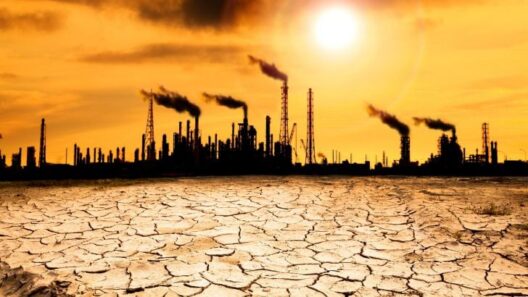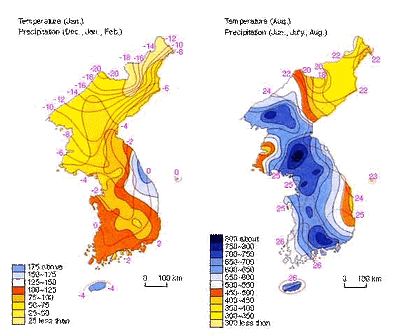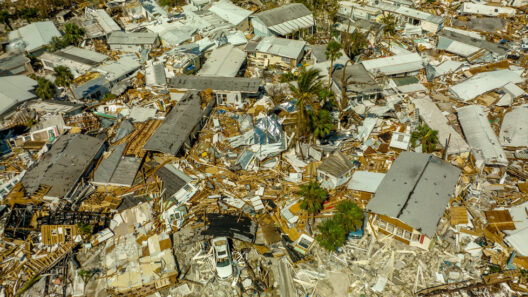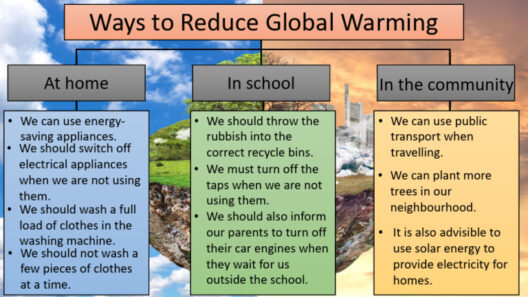As the Earth hurtles through the 21st century, the phenomenon of global warming has reached a fever pitch, a relentless swell in temperature trajectories that threatens to envelop the planet. This is not merely a statistical uptick; it is akin to a slow-cooked disaster simmering on a back burner, seducing us into complacency while its ferocity brews imperceptibly beneath the surface. To grasp the concept of global warming, one must first understand its complex mechanics, nuances, and multifaceted dimensions.
The science of climate change is intricate yet fundamentally rooted in the greenhouse effect. Solar radiation penetrates our atmosphere, and while some of it reflects back into space, a significant portion is absorbed by the Earth’s surface. This energy warms the planet and is re-radiated as infrared radiation. However, certain gases, including carbon dioxide, methane, and nitrous oxide, act like a thick blanket, trapping this heat and preventing it from escaping. As if engrossed in a temperature tug-of-war, the balance between incoming solar energy and outgoing infrared radiation becomes gradually warped, causing the planet’s temperature to rise over decades and centuries.
This warming trajectory is not uniform; it oscillates like a pendulum, influenced by various factors, including geographic location, time of year, and atmospheric conditions. For instance, the polar regions have experienced heightened warming, a phenomenon aptly termed Arctic amplification. As ice sheets and glaciers melt, the albedo effect diminishes—the Earth’s surface becomes less reflective and absorbs more heat, further accelerating warming in a vicious cycle. The irony is stark: as we strive to mitigate climate change, nature reveals its resilient deceit in the way it exacerbates the consequences of warming.
The ubiquitous increase in temperature is reflected in frightening measures and stark data visuals. The world has already warmed approximately 1.2 degrees Celsius since pre-industrial times. While this may seem modest, it translates to dire consequences—the frequency and severity of heatwaves, hurricanes, droughts, and floods have skyrocketed, transforming once-familiar landscapes into harbingers of volatility. Metaphorically speaking, the world has donned a heavy, worn-out coat of heat, one that constricts and suffocates, making life unbearable for many.
Temperatures are not the only metrics that warrant close examination; understanding the temperature trajectory necessitates analyzing its repercussions on ecosystems and biodiversity. Changes in temperature signature can disrupt delicate ecological balances. For instance, coral reefs, with their vibrant colors, can be likened to the underwater canaries in the coal mine. As they bleach and die due to rising sea temperatures, they send an alarming message of the cascading effects on marine biodiversity and the livelihoods that depend on them.
Moreover, the implications extend into realms beyond nature. Human health bears the brunt of escalating temperatures as well. Heat-related illnesses surge, exacerbated by insufficient adaptation in urban areas. Vulnerable populations, including the elderly and those with pre-existing health conditions, find themselves ensnared in a web of compromises where survival becomes an uphill battle. The societal fabric frays as food security diminishes, driven by yield reductions in agriculture, driven not just by temperatures but also erratic precipitation patterns.
Vulnerability exists in various forms. Emerging economies, with their limited adaptive capacities, find themselves disproportionately affected. The juxtaposition between affluent nations, capable of investing in mitigation and adaptation strategies, and their less fortunate counterparts reveals an uncomfortable truth: climate change acts as a magnifying glass that highlights existing inequalities, further entrenching the disparities that plague global society.
If the trajectory of global temperature is a winding road, it is riddled with bake sale bake-offs and intractable roadblocks. The ethos of adaptation becomes crucial as societies recognize that they must prepare to endure the inevitable impacts of climate change. It compels governments to adopt sustainable policies, promote renewable energy sources, and leverage innovative technological solutions. Efforts are required on a systemic level—cities must be designed with resilience in mind, preserving green spaces and constructing buildings that respect the ethos of sustainability.
Nevertheless, adaptation alone is insufficient. The overarching imperative is to truncate the temperature trajectory before it spirals out of control. Global cooperation is essential, and international agreements such as the Paris Accord represent the confluence of hope and scientific urgency. Limiting global warming to well below two degrees Celsius through collective action—and ideally to 1.5 degrees—requires transformative changes in how we utilize energy, approach consumption, and treat our natural resources. These changes, while challenging, can reverberate positively through economic opportunities, technological advancements, and restoration of natural ecosystems.
Nevertheless, these initiatives face an uphill battle amid populist sentiment, misinformation, and resistance. It becomes increasingly vital to evoke a narrative of urgency, ensuring that policymakers and stakeholders comprehend the gravity of the situation. The relationship between mankind and the environment must be framed not as a transaction but as a partnership, underscored by living harmoniously and responsibly with the Earth. A reimagining of societal values towards sustainability can foster a flourishing coexistence that nurtures both humanity and nature.
Ultimately, the story unraveling before us is not a mere depiction of rising temperatures—it is a moral imperative for action. The temperature trajectories serve as paradigms that encapsulate the interplay between human agency and climatic repercussions. Thus, it is critical to recognize that while we face formidable foes, we possess the means to act—both individually and collectively. To harness the potential for positive change, we must comprehend our role in shaping the trajectory, wielding knowledge and empathy as our guiding principles, ensuring that generations to come inherit a world that is not hotter, but rather, cooler and wiser.







